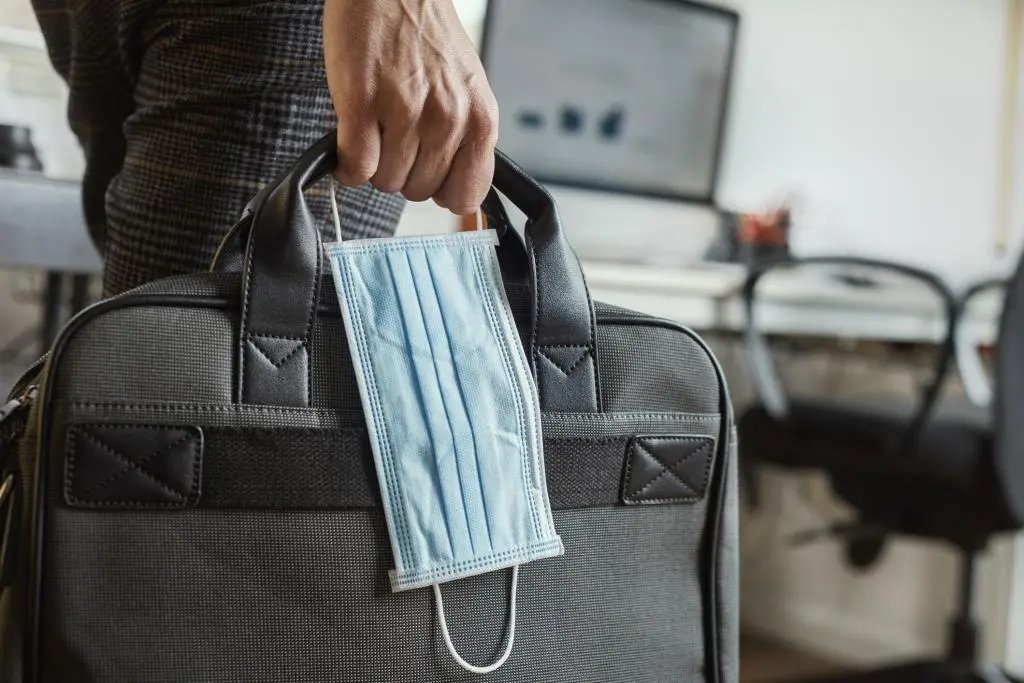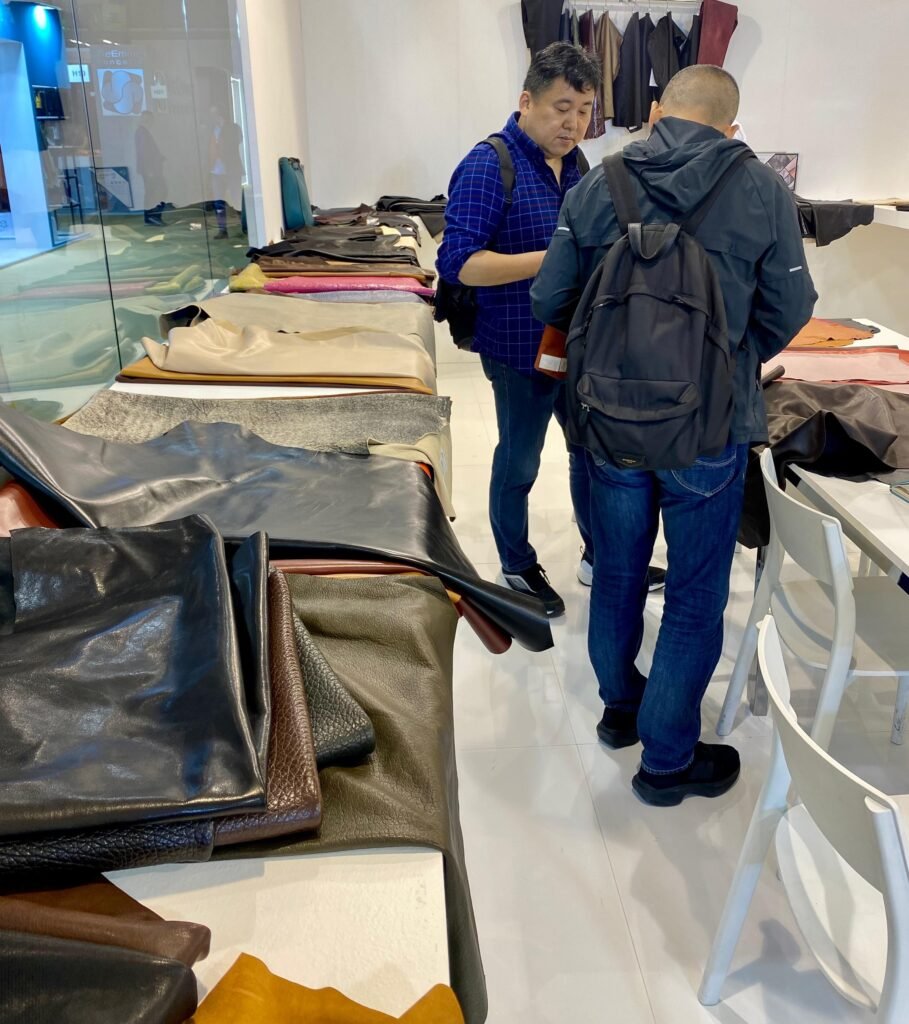While rising interest rates did not drastically change consumer shopping habits, they significantly increased brands’ investment and inventory costs.
After high expectations, the Lineapelle Milan September 2024 fair closed its doors with disappointments. Lineapelle Milan, a fair where the pulse of the global leather industry is most strongly felt, left a sense of pessimism this time.
In fact, as the sector gradually progressed toward the autumn and the upcoming winter orders, the fact that the work was not as fast as desired changed all the medium and long-term plans of the manufacturers.
The Turkish leather industry managed to continue without losing strength, even gaining momentum during the pandemic, thanks to fewer disruptions in the supply chain compared to its competitors. Regional conflicts, wars, migration waves, and various other regional issues were well managed, turning these crises into opportunities.
At this point, however, for some reason, the process of turning crises into opportunities or simply maintaining what was already there could not be realized. Given the situation, we wanted to share insights on this topic and discuss what actions can be taken to clarify the current circumstances.
- Regional crises
- Overstocking post-pandemic
- Rising interest rates
- Global crises

REGIONAL CRISES
The slowdown trend in the global leather industry became increasingly apparent after the end of 2022 and continuing slowdown in 2023 and 2024. I would like to take a closer look at the regional crises we have experienced in recent years and assess the extent of their impact on the sector. Following that, we can explore the current problem together and better understand the challenges we face today.
- The Russia-Turkey Aircraft Crisis (2015)
The Russian aircraft that was shot down in Turkish airspace, while it temporarily slowed or even halted trade between Turkey and Russia, did not create an environment that would slow down the entire Turkish and global leather industry. During this period, companies that were directly dependent on the Russian market, particularly those involved in fur garment production, suffered to some extent. However, the overall sector was not significantly impacted.
- The U.S.-China Trade War (2018)
As China had become the world’s manufacturing center, the Trump administration imposed comprehensive additional customs duties on Chinese goods to slow down its growth. These additional custom duties were a significant reaction to China’s economic expansion. Specifically, in the leather garment industry, the existing 6% customs duty was raised by 25%, bringing the total to 31%.
To put this into perspective, a leather jacket that was previously sold for $100 could be cleared through U.S. customs for $106 but with the new taxes it could be cleared for $131. This dramatic increase in costs made it difficult for Chinese manufacturers to remain competitive in the U.S. market.
As a result, many Chinese producers shifted their focus back to the domestic market, as their ability to export with low-cost labor became severely restricted. Chinese exporters suffered significant losses, and many found themselves on the verge of losing the massive U.S. market altogether.
In response to these developments, American brands started to pull out of China, seeking new manufacturing bases in other countries with lower production costs. Many companies relocated to Vietnam, Indonesia, India, Balkan countries, and Turkey. This shift created opportunities for these nations, as the additional tariffs imposed on China led to a rise in production in other countries.
- Covid-19 Pandemic (2019-2021)
During the pandemic, while some countries implemented strict measures, developing countries managed the process in a more controlled yet flexible manner. Unlike in many developed nations where lockdowns led to business closures and halted production, many developing countries allowed businesses to remain open, enabling production and employment to continue largely uninterrupted.
- Suez Canal Incident (2021)
The blockage of the Suez Canal by the container ship Ever Given caused significant chaos in global trade, logistics, and supply chains. The delays of over a month disrupted the plans of manufacturers, leading to container shortages and increased prices for raw materials. In this climate, leather producers worldwide were able to pass on the rising logistics and chemical costs to brands, resulting in higher prices for leather products.
- Arab Spring (2021)
While the Arab Spring led to serious humanitarian crimes, it did not have a significant impact on global leather trade. The relatively weak leather production and leather garment trade in the region meant that its influence on the broader market was limited.
- Ukraine-Russia War (2021-2024)
The Ukraine-Russia war has been one of the most significant events affecting the leather industry. Although it may appear as a conflict between neighboring countries, its effects were more severe:
- Increased Production Costs in Europe: The war has led to rising energy costs, impacting production expenses for many manufacturers in Europe.
- Closure of Chain and Luxury Brands: Many chain brands and luxury groups operating in the region have been forced to close, affecting supply and distribution networks.
- Restrictions on Russian Tourists: The war has restricted the movement of Russian tourists, who are known for their high consumption habits. This has led to decreased spending in markets where these consumers typically shop, affecting brands that relied on this customer base.
- Civil Wars (2015-2024)
Ongoing internal conflicts in Asia, Africa, and the Middle East have persisted, yet these regional disturbances have not significantly impacted global trade. Some disruptions in the supply processes of certain raw materials have had localized effects, but the broader leather market has largely remained stable.
- Israel-Palestine and Regional Conflicts (2024)
While conflicts in the Israel-Palestine region and surrounding areas can create a ripple effect through global markets, they have not resulted in large-scale impacts on the leather industry worldwide. The interconnectedness of global trade means that while localized conflicts may influence certain supply chains, the overall effect on the leather sector remains limited.

PANDEMIC-RELATED OVERSTOCKING
As the COVID-19 pandemic began to wane, people started to emerge from their homes and return to their workplaces. With the shift in social dynamics during the pandemic, there was a resurgence in consumer shopping habits. However, a significant gap existed: many stores were either out of stock or only carried products that were outdated from 2-3 years prior. The limited availability of fashionable items meant that whatever was in stock would sell out quickly.
In this climate, global brands decided to expand their inventories, anticipating a wave of consumers eager to spend money. Due to low-interest rates, these brands overproduced, leading to inventory levels 2 to 3 times higher than in the pre-pandemic years during 2021-2022. However, this excessive production could not be sold off quickly in the years following the pandemic, resulting in overcrowded warehouses. This overstock situation forced brands to skip or completely halt orders for the following season.
RISING INTEREST RATES
While rising interest rates did not drastically change consumer shopping habits, they significantly increased brands’ investment and inventory costs. For instance:
- A Shirt Brand:
- Produces 1,000 white shirts at a cost of $10 each, resulting in a total investment of $10,000.
- Sells each shirt for $40, generating a revenue of $40,000.
- A Leather Jacket Brand:
- Produces 1,000 leather jackets at a cost of $200 each, leading to a total investment of $200,000.
- Sells each jacket for $800, resulting in a revenue of $800,000.
Initially, brands were able to produce high-value items without financial strain, easily securing bank loans to facilitate their operations. However, rising interest rates have now restricted access to financing, increasing risks and resulting in high inventory costs. Global brands are closely monitoring this situation, as their operations are directly affected by these elevated interest rates.
The combination of pandemic-related overstocking and rising prices has led to a radical decrease in the quantities of new productions.

GLOBAL CRISES
Global crises are events that simultaneously affect the entire leather sector. Currently, the situation in the leather industry reflects a shift in consumer behavior, where individuals are moving away from consumption towards saving and preserving their finances.
European and American consumers, significant markets, have decided to make do with what they have and cut back on non-essential expenditures. Consumers are now much more cautious about purchasing additional leather jackets, new pairs of shoes, or bags.
This seemingly small shift in consumer behavior has resulted in an economic slowdown that larger regional crises have failed to produce. Even though companies may possess dynamic, flexible, and rapid decision-making capabilities, they will inevitably enter a phase of significant deceleration due to these changes in consumer trends.









